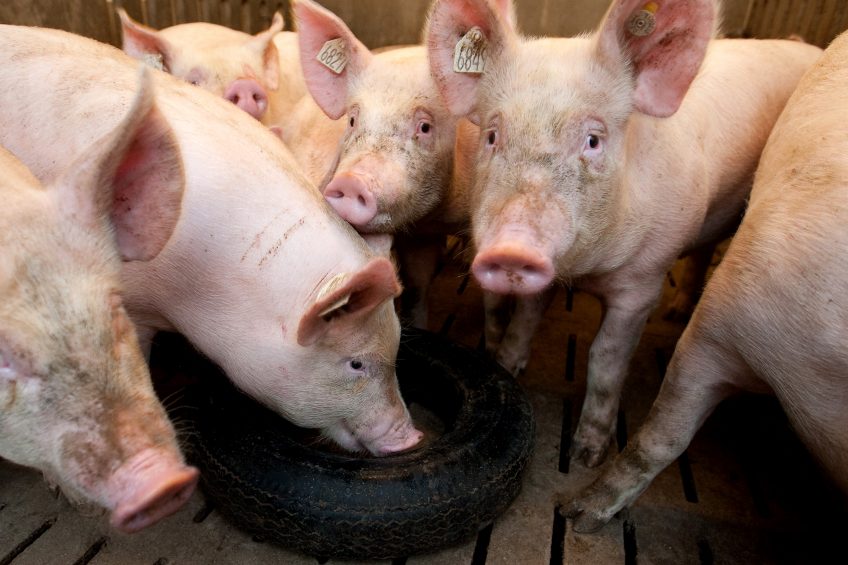Project shows lack of knowledge in pig research

Gaps in pig nutrition research have been highlighted by a research project in Northern Ireland that has just come to a close.
The project ‘ECO FCE’ is an project funded by the European Union which focuses on improving feed use efficiency and reducing the ecological footprint of pigs and broiler chickens.
Within this project a major exercise was undertaken to utilise the vast library of information that already existed in the literature with regard to the feed use efficiency of pigs.
Review of pig feed and genetics literature
In order to do this a systematic review of literature was conducted and key words were selected which captured publications in the peer review literature reporting the effects of feed, genetics and gut structure on feed use efficiency, daily intake and growth rate.
However, according to the deputy co-ordinator of ECO FCE, Dr Elizabeth Magowan from the Agri-Food and Biosciences Institute (AFBI) in Northern Ireland, her search for certain research proved fruitless. In fact, she found that a major gap in knowledge exists with regard to targeted nutrition for different genotypes as well as phenotypes.
Interaction between pig genetics and nutrition
Dr Magowan said: “A key aim of the review was to identify the interplay between genetics and nutrition. It is well known that genotype and nutrition independently can have a major impact on animal performance and nutrient excretion but less is known about how the two interact, especially using commercially reared animals.”
“Using the database generated from the systematic review, which represented a 5 year period between 2008 and 2013, 3 papers were identified which specifically investigated the interaction between pig genotype and nutrition. 2 of these papers compared Asian genotypes, Mong Cai and Lao, whilst the third compared an Iberian genotype with a Landrace/Large White genotype.”
Crude protein level and source of protein
“With regard to nutrition the crude protein level of the diet was the main variant when examining the Mong Cai and Iberian genotypes whereas the source of protein was the main variant in the work using the Lao genotype. The studies found that whilst the effect of protein source was similar across the Lao and Large White genotypes, the level of crude protein had an interactive effect on the performance of Mong Cai based pigs.”
“The level of crude protein also had an interactive effect on the digestibility of nutrients in the work comparing Iberian and Landrace crossed with Large White genotypes.”
“Whilst the genotypes used in these studies could be considered as ‘extreme’ with regard to commercial pig production across Europe, they do demonstrate the need to accurately target nutrition, especially crude protein, to animals with varying intake and growth rate potential.”
Optimising animal performance and nutrient excretions
“However, although this appears to be a key area of refinement to optimise animal performance and reduce nutrient excretions, it is surprising that more research in this area is not available in the open literature with regard to more modern genotypes. Therefore, this review of literature would suggest that a major gap in knowledge exists with regard to targeted nutrition for different genotypes as well as phenotypes.”
She concluded, “It is suggested that the development of any future ‘precision nutrition’ should develop models to predict the nutrient requirements of animals with varying intake and growth rate potential both within and between genotypes.”










